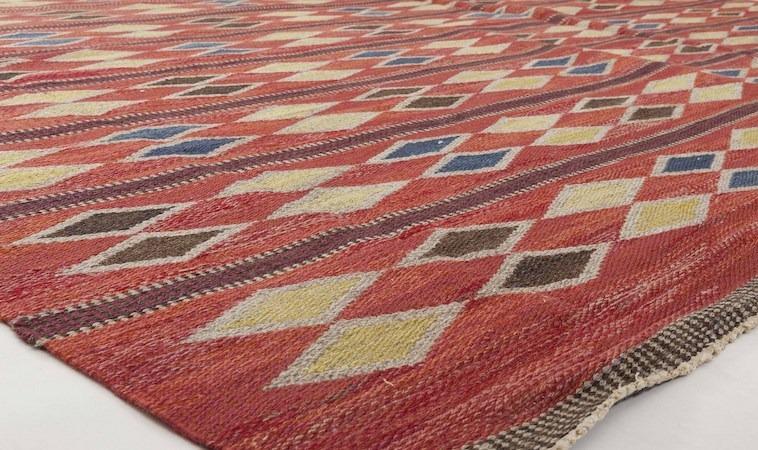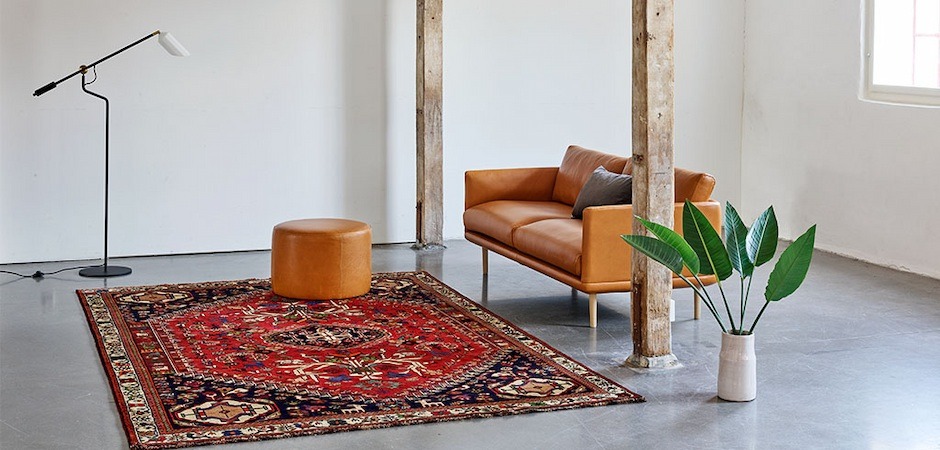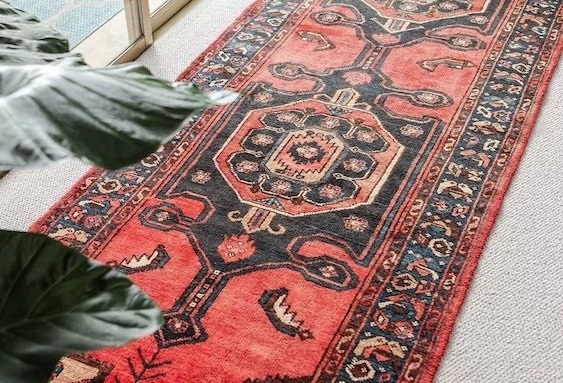The Persian rugs and carpets are among the most famous rugs and carpets made by machine and hand. Based on their materials, these rugs and carpets have various types, patterns, and designs. The materials used in the carpets and rugs are partly natural and partly industrial. The materials used in the carpets and rugs are silk, cotton, propylene, acrylic, polyester, and nylon. There are many types of carpets according to the various patterns and designs, some of which are unique. The price of Persian carpets and rugs depends on their materials and patterns. The most expensive Persian rugs and carpets are those which weaved by hand and their material is silk or cotton. 
The Most Expensive Persian Rug
Persian Hand-woven rugs are more expensive than that made by machine. As mentioned before, the most expensive rug and carpet is a silky rug that was weaved by hand. This magnificent hand-woven carpet is world-famous. It is because this type of carpet is made by expert and skillful carpet weavers in the region. They are very nice and beautiful. Here are some examples of the most expensive Persian hand-woven carpets. Clark Carpet This carpet has woven in the province of Kirman in the early 17th century. Its dimensions are 264*196 cm. this antique and unique rug belonged to American Senator and billionaire Viliame Clark, from New York, and later he donated it to Corcoran Museum, in Washington. This carpet was bought by a unanimous person from the Sotheby's in New York for 33,769,000 USD. It is the most expensive Persian rug. Kirman Vase Carpet The dimensions of This hand-knotted Persian Carpet are 614.68 *374.98 cm. The carpet was sold for 9,600,000$ and for a long time it was the most expensive rug in the world. Silk Isfahan Rug The third more expensive rug is the Silk Isfahan rug. This carpet is weaved from pure silk and has high density with embossed patterns which make it unique and magnificent. This carpet sold in 2008 for 4,45,000 $.  Tabriz Medallion Carpet It is another very famous and more expensive carpet. Tabriz Medallion Carpet belongs to the 16th century and its dimensions are 283.84*335.28. This nice and beautiful carpet has been sold for 2,400,000$. It is the fourth Persian more expensive carpet in the world. These rugs are the most expensive rugs in the world. Also, there are other carpets and rugs which have been sold for between 100,000 and 200,000$. The absolute majority of these expensive rugs are Persian carpets. For instance, four out of five most expensive carpets are made and weaved by the Persian people.
Tabriz Medallion Carpet It is another very famous and more expensive carpet. Tabriz Medallion Carpet belongs to the 16th century and its dimensions are 283.84*335.28. This nice and beautiful carpet has been sold for 2,400,000$. It is the fourth Persian more expensive carpet in the world. These rugs are the most expensive rugs in the world. Also, there are other carpets and rugs which have been sold for between 100,000 and 200,000$. The absolute majority of these expensive rugs are Persian carpets. For instance, four out of five most expensive carpets are made and weaved by the Persian people.
Machine Woven Wool Rugs
There are hand-woven and machine-woven rugs that from the wool. This type of carpet and rug which is made from natural materials if very favorable and world-famous. Due to its material, this carpet is very healthy and comfortable. In the far past, this material was available in every society and still is used in the carpet industry. Wool that is cropped from animals like sheep and goats is processed and used in the carpet and rug. Carpet that is made from wool is two types according to the ways the rugs and carpets are weaved. There are hand-woven rugs that are relatively more expensive than machine-woven ones. Machine-woven rugs which are produced by late invented machines are very similar to hand-woven rugs, but with very low and reasonable prices. These beautiful rugs are produced in various patterns and designs. One of the most popular rugs which are a very bestseller in today's world is pictorial rugs. These royal and majestic rugs were weaved in various reeds and densities. So, there are pictorial rugs with 500 reeds, 700 reeds, 1000 reeds, and 1200 reeds. Various pictures like human pictures, animals, nature, mountains, trees, and jungle are used in the rugs. There are two types of pictorial rugs; in one type the picture is weaved by warp yarn in the rugs.  The picture in this type of rug is very durable and does not change. the number of colors used in this type of rug is limited. There is another type of pictorial rug in which the picture is painted later on the surface of the rug. In this type of rug, the colors used for painting is numerous and the picture is very clear and glorious. The only drawback of this type of rug is that the colors used in the picture may change and blanch over time. Generally, the rugs produced from wool are convenient for various geographical regions. It is warm in winter and cold in summer.
The picture in this type of rug is very durable and does not change. the number of colors used in this type of rug is limited. There is another type of pictorial rug in which the picture is painted later on the surface of the rug. In this type of rug, the colors used for painting is numerous and the picture is very clear and glorious. The only drawback of this type of rug is that the colors used in the picture may change and blanch over time. Generally, the rugs produced from wool are convenient for various geographical regions. It is warm in winter and cold in summer.
Persian Rugs History
Persian carpets and rugs have a long history. The oldest survived pile carpet in the world is Pazyryk which belongs to the fifth century BCE. Historians believe that the carpet was weaned by the people of ancient Khorasan. After that, various types of rugs and carpets have been woven by people of the region. The mean material which commonly used to produce rugs was wool. The rugs and carpets were usually weaved by villager women. After the Industrial Revolution and the invention of the machine, which spread in all aspects of human life, the first machine-woven carpet was produced in Kashan in the 1970s. likewise, the other industries' machines are widespread in the carpet industry rapidly and significantly. During one decade, all types of rugs and carpets were produced by machine and the price of carpets decrease noticeably. As a result, machine-woven carpets can be used by the majority of people. Today the carpets and rugs made by machine are more like to their hand-woven counterparts. But the piece of this type of carpet is very low and reasonable.  To conclude, Persian rugs and carpets are very famous in the world. Based on the ways and methods of weaving, there are two types of carpets. Hand-woven carpet and machine-woven carpet. These two types of carpets are produced in various patterns and designs with different materials. Despite some similarities in the quality of the two types, there is a huge gap between the two according to price. In some cases, the price of hand-woven carpets and rugs is 300 times more than machine-made carpets. Our company has profound knowledge and great skill in exporting high-quality carpets and rugs at reasonable prices.
To conclude, Persian rugs and carpets are very famous in the world. Based on the ways and methods of weaving, there are two types of carpets. Hand-woven carpet and machine-woven carpet. These two types of carpets are produced in various patterns and designs with different materials. Despite some similarities in the quality of the two types, there is a huge gap between the two according to price. In some cases, the price of hand-woven carpets and rugs is 300 times more than machine-made carpets. Our company has profound knowledge and great skill in exporting high-quality carpets and rugs at reasonable prices.

0
0